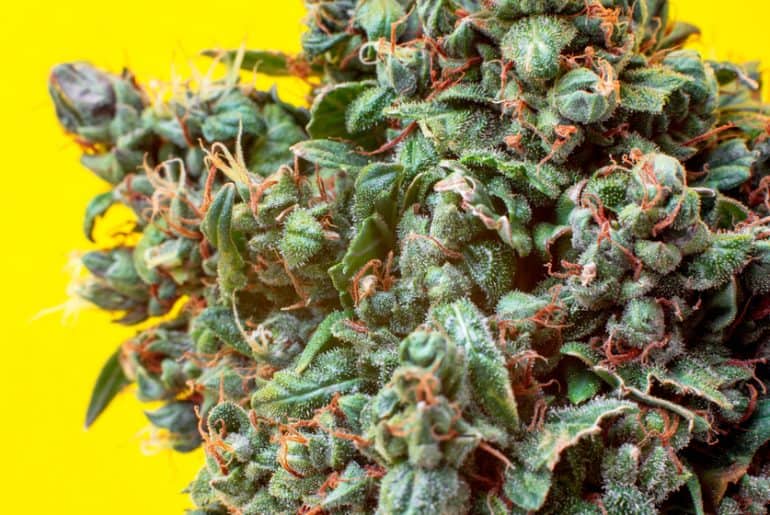Growing marijuana can be a whole lot of fun, but most people aren’t really in it for the fun, but rather for the overall result. More than anything else, most people want maximum bud yields and size.
The number one goal is to get as much high-quality cannabis as you can out of every single plant.
Therefore, you’d probably like it if your cannabis buds on each plant are as big, thick, and luscious as possible, and the more of them there are, the better.
This is exactly what we are here to help you with today. We want to talk about a variety of methods that you can utilize to maximize cannabis bud size and yields.
We’ll take a look at many different methods you have at your disposal, many of which can be used for both indoor and outdoor growing.
With the variety of techniques and methods we’re about to look at below, maximizing cannabis bud size and yield is very much possible.
1. Start with the Right Strain of Cannabis Plants
One of the best things that you can do to achieve the maximum bud size is to start with the right cannabis strain in the first place.
In case you did not know, there are literally hundreds, if not thousands of different cannabis strains out there at this time.
Exactly what kind of a yield they all produce depends mainly on genetics, as well as external factors, such as how you choose to grow the plants.
Therefore, it is best for you to do some research in terms of which strains produce the highest yields.
If you are looking for strains that have the biggest buds and biggest yields, options such as Big Bud, Northern Lights, White Widow, Skunk #1, Jock Horror, Chronic, and Durban Poison all make for great starting points.
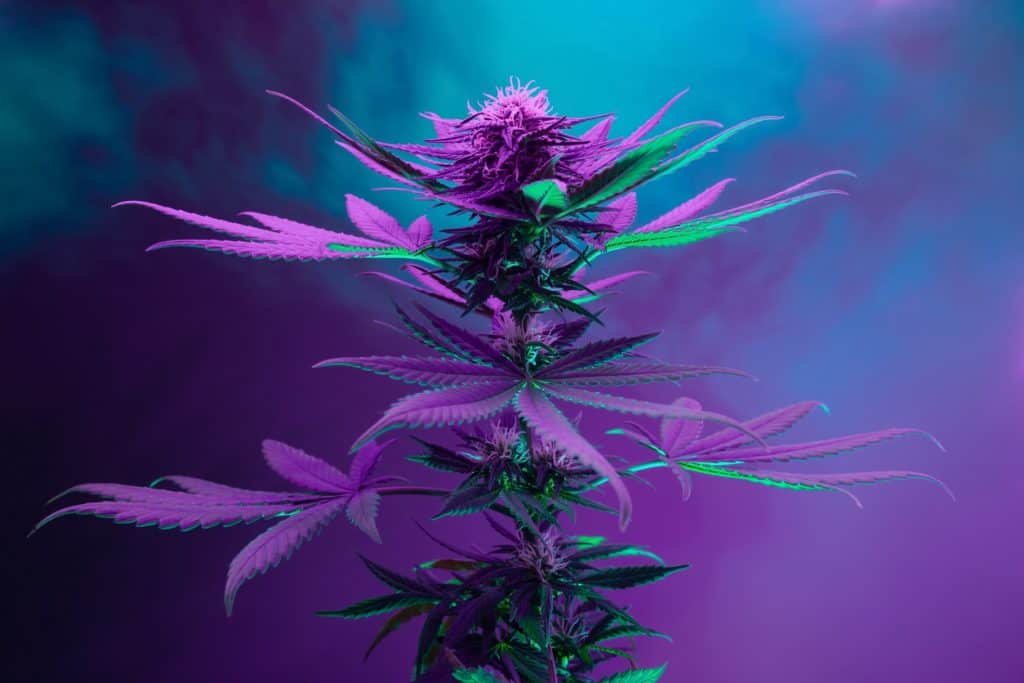
2. Manage Nutrients Properly, Especially During the Flowering Stage
Perhaps one of the most important things that you can do in order to increase bud size and overall yield is to provide your cannabis plants with the proper nutrients and the right amounts of them.
The nutrients are the food that your cannabis plants use to grow big and strong, just like the minerals and vitamins that you need to maintain your own body.
Therefore, it is essential that you do some research into the exact nutrients that cannabis plants require.
Generally speaking, the nutrient requirements for cannabis plants are different during the vegetative state than during the flowering state.
During the vegetative state, the plant is focused on growing foliage, whereas during the flowering stage, it’s focused on growing the buds for flowers.
These processes require slightly different types of nutrients.
The three main nutrients that cannabis plants require are known as the NPK nutrients, otherwise known as nitrogen potassium and phosphorus.
During the vegetative state, cannabis plants tend to require a lot more nitrogen and if you water two nutrients.
Nitrogen is required for effective foliage growth. Your plant requires big foliage, which are those families, in order to engage in photosynthesis.
The more of those fan leaves your plant has, the more light it can absorb, and the more energy it can produce to grow bigger and stronger.
Then, during the flowering stage, cannabis plants tend to require more phosphorus and potassium, which your plant needs in order to grow big and potent buds.
Therefore, it is essential that you use two different kinds of nutrient sets or fertilizers for the vegetative state and the flowering state. Bloom nutrients and bloom boosters are a must to get huge buds on the entire plant no matter how large your grow room is.
Depending on the type of soil you have, you may want to fertilize your plants up to once per week, depending on their needs.
3. Proper Light is Essential for Bigger Buds
Next, it is essential that you provide your cannabis plants with more than enough light.
Once again, light is what your cannabis plants used to perform what is known as photosynthesis, which is when they take nutrients and sunlight and convert them into fuel sources such as sugars, which they then use to grow big and strong.
Therefore, providing your plants with the right kind of light, the right amount, and more, is all very important.
In terms of the type of light you provide, you need something that mimics the sunlight spectrum. This usually means providing your plant with both red and blue light.
For the record, blue light is generally needed for the vegetative state, as this helps to produce healthy stems, it establishes healthy roots, and it also helps to increase overall plant and foliage density.
Then, during the flowering stage, plants generally need much more red light, as this helps to produce much bigger and more flowers, or in this case buds.
Furthermore, the stronger your grow lights are, which comes down to their wattage, the higher your yield will be.
The more light your cannabis plants can absorb, the more photosynthesis they perform, and the bigger they grow.
Many growers choose to use either 400 Watt or 600 Watt light bulbs, whereas some even use light bulbs that are 1000 watts. On average, you want to have anywhere between 40 and 70 watts per square foot of grow space.
Usually, the more watts the lights have the better, but just remember that stronger lights also produce more heat, which is something you’ll need to take care of, as we’ll discuss below.
Due to their overall ease of use, cost effectiveness, and longevity, most people opt to go for LED lights, although HID lights are another option. This is a great way to increase your plant’s growth and overall bud density, as all experience cannabis growers know!
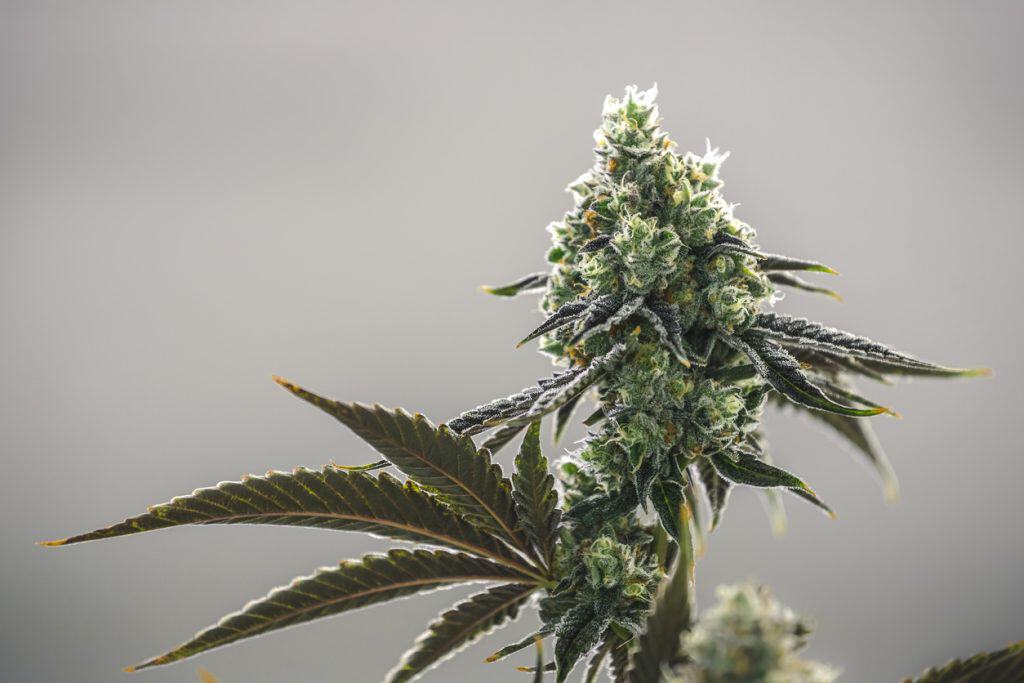
4. Humidity and Temperature Control
Next, it is also extremely important that you properly manage temperature and humidity during the growth process. Both of these factors are crucial.
If we are talking about humidity, if it is too low, your plants may dry out too quickly and this may also lead to other issues, such as stress, slowed growth, and insects in some cases.
However, if the humidity level is too high, it means that your plants stay wet for too long, particularly the soil, which may lead to root rot and the inability of your plants to absorb nutrients.
High humidity levels are just not good in general because they can essentially rot your plants.
When the cannabis plant is in its vegetative state, humidity level between 55% and 70% is ideal. When the cannabis plants are in their flowering stage, a relative humidity level between 40% and 60% is the ideal.
Depending on where you live, this means that you may have to get either a humidifier or a dehumidifier.
The temperature is also very important to pay attention to when it comes to maximizing bud size, yield, and the overall health of your plant.
If the temperature is too low, the air may also be too dry, and your plant may not grow quickly enough.
If the temperature is too high, the air likely hold on to far too much moisture and it may actually stress out your plant due to being too hot.
During the vegetative stage, your marijuana plant should be within a temperature range of 75 to 90 degrees Fahrenheit.
When your cannabis plants are in the flowering stage, a temperature range between 65 and 85 degrees Fahrenheit is ideal, with somewhere around 75 degrees generally being considered best.
This means that you may need either an air conditioning or a heating unit, depending on where you live.
Just be sure to not overheat the grow room, or else you’ll cause your plans to suffer from heat stress, which will certainly not result in bigger yields.
5. Providing Plants with Adequate Space
Although this may sound somewhat cliche, many plants do grow to the size which you allow them to grow, which means providing them with adequate space.
First, this means providing your plants with adequate talk space for the foliage and buds to grow.
For a regular large weed plant, you’ll need at least 4 by 4 feet of space, if not more. You don’t want your cannabis plant touching any walls or other plants.
If the plant is cramped in a small space, it won’t grow as large as it otherwise would. Its genetics will attempt to prevent the plant from overgrowing in compared to the amount of space it has.
Next, this also means providing your cannabis plants with adequate pots and amounts of soil.
In most cases, somewhere around 5 gallons of substrate should be more than enough to allow your cannabis plants to grow big and strong.
That said, the more space you can provide the root system with, the larger it can expand, and ultimately the more nutrients it can absorb.
This is why outdoor cannabis plants tend to grow extremely large buds and have big yields, because they have a lot of ground for the root systems to develop in.
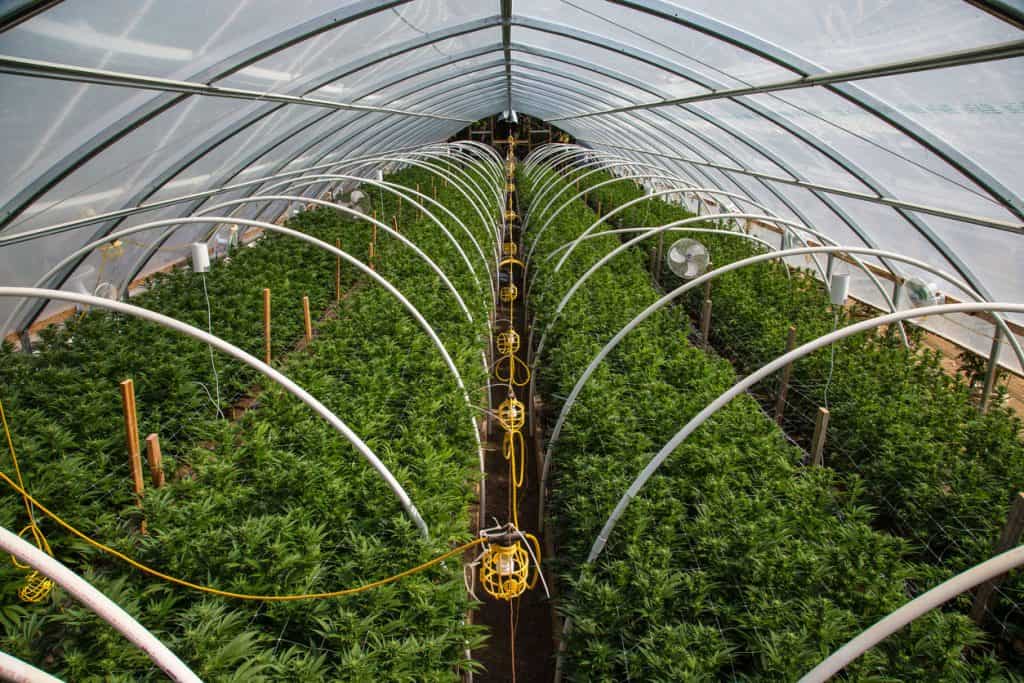
6. The Right Kind of Substrate
The next thing that you need to consider when it comes to producing big cannabis buds and large yields is that the right sort of substrate is definitely going to help.
By substrate, we are referring to the growing medium that your plants are growing in.
Yes, some people choose to use hydroponics setups, which generally result in huge yields and potent buds, but hydroponics setups are usually also very difficult and expensive to deal with.
Therefore, even though these hydroponic setups may result in bigger yields if done properly, we recommend sticking to regular soil.
Hydroponics setups are very fragile, and even small errors can cause the death of your plants. Dead plants don’t produce any yield at all.
Although there are plenty of fancy growing mediums out there, it is best to just use a high quality potting soil that is pH and nutrient balanced.
Just to make sure that the potting soil in question contains a moderate amount of nutrients, particularly a good deal of nitrogen, but less phosphorus and potassium.
Remember that your cannabis plant will need to be in the vegetative state for two or three months before it begins flowering, and in the vegetative state, nitrogen is the most important. You don’t want to provide your plant with too much phosphorus for potassium during the vegetative state, as this can cause problems as well.
This means that choosing the right kind of potting soil right from the get-go is very important. However, using just potting soil is not recommended, especially where drainage is concerned.
To help increase drainage and overall aeration, it is recommended that you also mix in perlite and vermiculite with your soil. You may also use coco coir.
These are all materials that are specially made to absorb moisture and then slowly release it over time.
This can help prevent you from over watering your plants, and it also helps prevent them from drying out in the event that you forget to water them for a couple of days.
This is most important for preventing root rot from occurring, something which can quickly kill all cannabis plants.
7. Supplement with CO2
Yet another thing that you can do to help increase the overall yield and bud size of your cannabis plants is to supplement with carbon dioxide.
That being said, carbon dioxide supplementation is something that you can really only do in a controlled indoor environment.
You can’t increase carbon dioxide levels outdoors, because there’s no way to keep that carbon dioxide contained and to keep it from floating away.
However, if you have a skilled indoor grow area, then using a carbon dioxide injection or supplementation system will be very ideal.
Just like humans use oxygen to grow and survive, plants require carbon dioxide to do the same.
Funny enough, the process of photosynthesis uses sunlight and carbon dioxide to convert fuel sources into energy, with the creation of oxygen being a a side result.
It’s just interesting because humans use oxygen and create carbon dioxide in the process, which is the exact opposite.
Either way, if you can manage to supplement your weed plants with some additional carbon dioxide in the growth phase, this will most certainly help them grow bigger, faster, and much stronger.
8. Keep pH Levels in Check
Another extremely important thing to do in order to increase blood size and yields is to keep the pH level, otherwise known as the acidity, at the proper levels.
The acidity or pH scale ranges from 1 to 14, with 1 being acidic, 14 being alkaline or basic, and 7.0 being totally neutral.
Some people might think that cannabis plants prefer the soil to be neutral, but this is not the case.
In fact, cannabis plants prefer the soil to be slightly acidic, with a pH value ranging from 5.8 to 6.2, with a value of 6.0 being ideal.
You really don’t want to exceed 6.2, as you don’t want to approach neutral values, and you certainly don’t want the soil to be alkaline or basic in nature. For one, this means starting out with pH balanced soil.
However, it also means that you need to balance your watering solution every time you provide it to your plants. Tap water itself may not be at the appropriate PH level, especially after adding your nutrients in.
Therefore, you need the proper kind of testing tools, such as a digital pH meter, to test your watering nutrient solution every time before you give it to your plants.
This will help ensure that you are providing your plans with a water solution of the appropriate pH level.
You may even want to use a pH soil monitor to test the pH levels of the soil, just to confirm that you are on the right track.
If the acidity level is either too high or too low, it will severely damage the roots of your plant, With the result being an inability to absorb nutrients, ultimately resulting in the death of your plant.
9. Help Support the Heavy Buds
If you expect your cannabis plants to grow big buds, then you need to support them as they are growing.
The bigger cannabis buds are, the more they will weight down on the branches, and this is something that the cannabis plant will be able to account for.
If it feels that the buds are growing too heavy and weighing the plants down, it may focus more energy on growing thicker stems as opposed to bigger buds.
To avoid your plant from focusing its energy on growing stems and branches as opposed to bigger buds, it is essential that you support the weight of those buds. Healthy plants should be able to support themselves, but sometimes they can produce buds that are excessive in weight, which is of course great for cannabis yields.
Some people may tie buds and branches up to the ceiling in an attempt to do so, whereas other people may use trellises such as those that are used for tomato plants. Whatever you can do to support those buds Should be done.
10. Avoid All Forms of Stress
OK, so we realize that this is a bit of a vague statement, but it is most certainly true. All forms of stress that your plant suffers will result in smaller buds and smaller yields.
This is the case whether we are talking about humidity, temperature, being replanted improperly, not getting enough or getting too much light, and much more.
Anything you do wrong here will affect the overall result, which is an unfortunate reality with cannabis plants.
Cannabis plants are somewhat fragile, and everything you do properly counts towards achieving bigger buzz and yields. Therefore, what we are really saying is that it is essential that you follow every single last tip on our list today as closely as possible. This needs to be done both during the flowering stage and during vegetative growth if you expect to get dense buds.
11. Pruning and Training Techniques
Although the main point of today’s article is to talk about how to produce bigger buds, the main point is most likely for you to just produce a bigger yield overall, whether that be in the form of bigger buds or just more of them. There are techniques that you can use in the flowering stage and the vegetative stage.
Well, one great way to create more buds and to increase the overall yield is by using a variety of pruning training techniques.
Both high stress and low stress training techniques involve cutting away certain parts of the plant and manipulating the plants in such ways to produce higher yields.
One such stress training technique is to cut away the top cola or top bud of the plant, otherwise known as topping, which effectively causes two of them to grow back. Every time you cut off the main bud, two will grow back, and this counts for the top of the plant as well as for the colas on all of the branches.
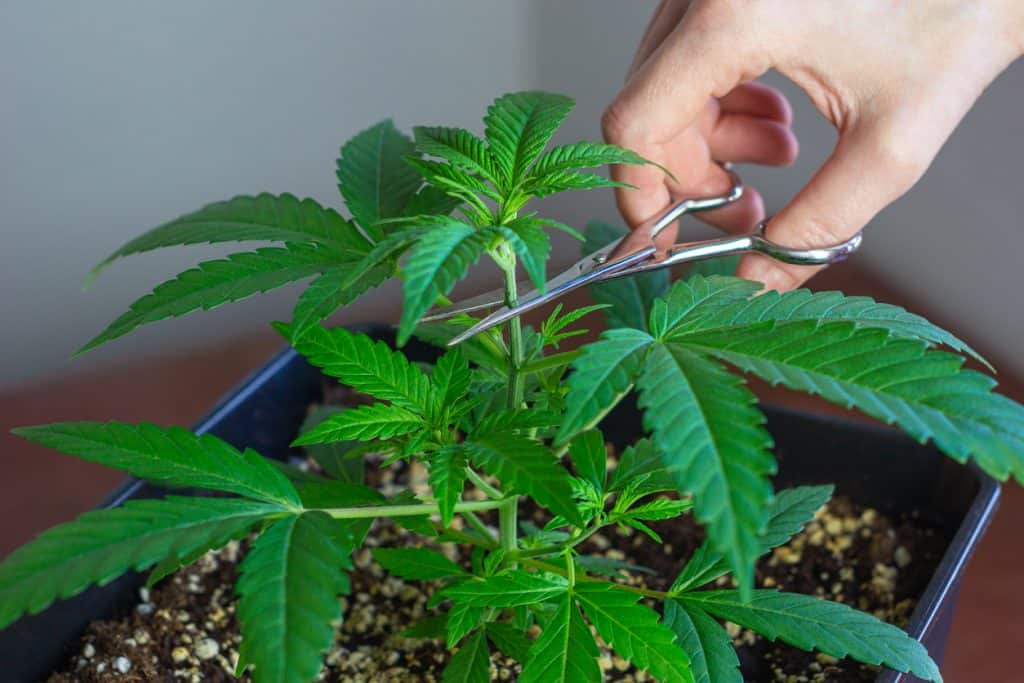
12. Time the Harvest Properly
The other way to ensure that you get the biggest buds and highest yields possible is to simply time the harvest properly with your flowering cannabis plants.
This means that you need to harvest your cannabis plants right when the buds are at the biggest, but also before the THC starts degrading.
Paying attention to the trichomes and pistils o your marijuana plants is a great way to know when it is time to harvest the plant. Many growers know that timing can make a big difference when it comes to getting massive buds.
Conclusion
As you can see, there are plenty of methods at your disposal that you can utilize to help increase the overall bud size that your plant produces, as well as to increase the overall amount of buds. It’s all about bigger buds.
With that being said, what it really all boils down to is just taking proper care of your plant. Providing your cannabis plant with proper temperature, lighting, humidity, and everything else, will provide it with the conditions that it needs to maximize its output.

